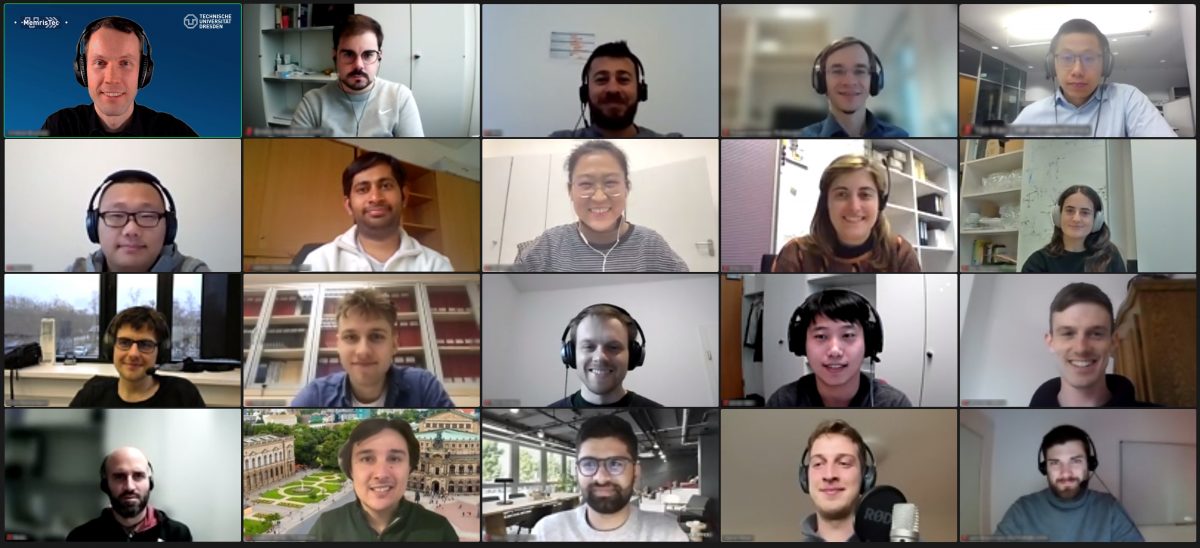For the first time the MemrisTec partners will meet face-to-face in Dresden on 18th and 19th May 2022. The main purpose of the workshop is the synchronization of the progress of all nine projects.


For the first time the MemrisTec partners will meet face-to-face in Dresden on 18th and 19th May 2022. The main purpose of the workshop is the synchronization of the progress of all nine projects.

MemrisTec offers a Girls’Day activity on the campus of TU Dresden. The event is titled: “Artificial Intelligence for your pocket – Object detection with a mini-computer”.
You may find further information here. (in German only as it is an event for high school students).


Congratulations to Dr. Erika Covi for receiving the prestigious Starting Grant from the European Research Council (ERC) for her pioneering project: MEMRINESS Memristive Neurons and Synapses for Neuromorphic Edge Computing. Dr. Erika Covi is a staff member at NaMLab, an affiliated institute of TU Dresden, and active in the MemrisTec project BioMCross.
Dr. Erika Covi and her team will investigate physical properties of memristive devices. Particular focus will be on the ability of memristors to mimic the learning behaviour of neurons and synapses. This property of memristors enables the development of neuromorphic electronic systems for information processing. Such intelligent and highly efficient network components are better able to meet the challenges of the Internet of Things compared to conventional technologies.
ERC Starting Grants support excellent researchers at the career stage where they establish their own independent research team or programme. Dr. Covi will receive up to €1.5 million for her five-year research.

Nan Du, principal investigator in the MemrisTec project MemDPU, changed the affiliation from TU Chemnitz to FSU Jena since 01.12.2021. She is heading the radiometry working group which is part of the Institute of Solid State Physics (IFK) at the Faculty of Physics and Astronomy of the Friedrich Schiller University (FSU) Jena and as well belongs to the Leibniz Institute of Photonic Technology (IPHT). In MemDPU her team develops novel general purpose Domino Processing Units (DPU) as unconventional in-memory-computing paradigm with high efficiency for data-intensive applications. Her group is responsible for the optimization and physical implementation of electroforming-free analog memristors as well as the design and realization of memristive systems.

In the two-day MemrisTec seminar, junior researchers from all nine projects presented their dissertation plans and exchanged ideas about memristive devices for intelligent systems, also with the senior researchers present. In addition, the participants demonstrated a sense for relevant application possibilities in group work and developed concepts for working prototypes. A workshop on planning one’s own doctorate rounded off the offer for the young talents. The event, which was originally planned to take place in Dresden, was held digitally at short notice.

Since September 1, 2021, Prof. Dr.-Ing. Amelie Hagelauer has headed the Chair of Micro- and Nanosystems Engineering at TUM. The appointment was made jointly by the Faculty of Electrical Engineering and Information Technology and the Fraunhofer Research Institution for Microsystems and Solid State Technologies EMFT.
Prof. Hagelauer studied mechatronics at the Friedrich Alexander Universität Erlangen-Nürnberg (FAU) and received his PhD there in 2013 on the topic of “Loss Mechanisms in BAW Components for Mobile Radio Applications.” From September 2016 to August 2019, she worked at FAU as Lecturer and Senior Scientist at the Institute for Electronics Engineering and served as group lead “Electronic Circuits.” Since August 2019, Prof. Hagelauer worked as Full Professor (W3) for Communications Electronics at the University of Bayreuth (UBT), where she participated in the MemrisTec project Memristive In-Memory Computing: radiation hard memories for computers in space (MIMEC).

Tommaso Rizzi improves device models for new space applications to supply rural areas with internet by satellites based on radiation-hard electronics. These in-memory computing circuits consist of memristors (resistive RAM).

The chair of Computer Engineering is now lead by Dr. Marc Reichenbach, who substitutes Prof. Dr.-Ing. habil. Michael Hübner, the new Vice President for Research and Transfer at BTU.

Lautaro Petrauskas aims to protect harmless insects by replacing chemical pesticides that are not selective by large-area traps consisting of printable memcapacitive circuits with low-power consumption for pattern recognition in the MemrisTec project MemTrap.

As a measure to enhance the knowledge base, especially of junior scientists, and the interdisciplinary scientific discussion, MemrisTec established Paper Club. Here, enrolled scientists meet every two weeks in a virtual meeting and discuss on important papers and reviews. The MemrisTec Paper Club started today with an overview on emerging non-volatile memory technologies like PCM, STTRAM, RRAM, and FeFET.
